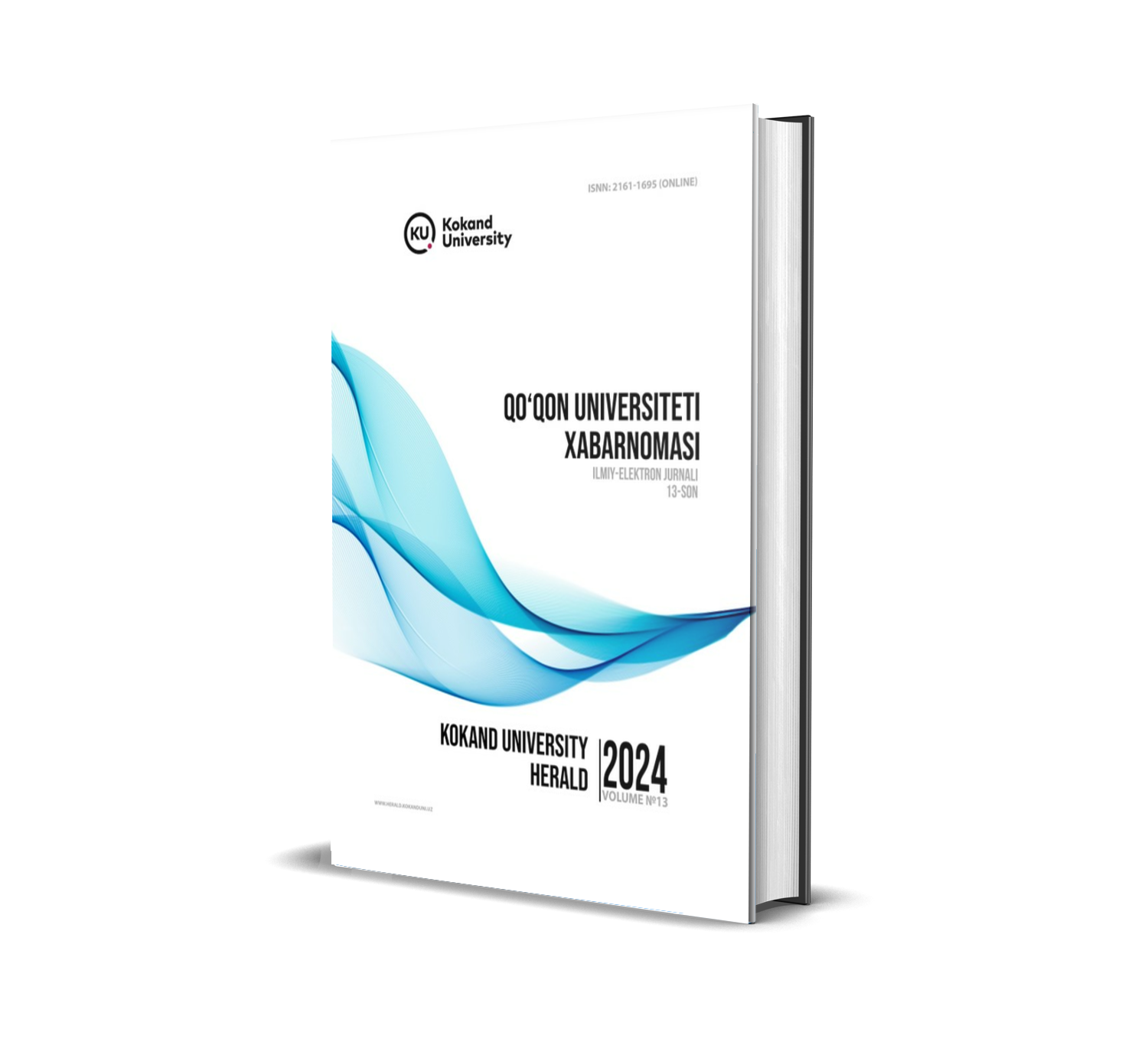PHRASEOLOGICAL UNITS WITH COLOR COMPONENTS AND THEIR IMPORTANCE IN ENGLISH LANGUAGE
DOI:
https://doi.org/10.54613/ku.v13i.1091Keywords:
phraseological units with color components, idioms, phraseological units, etymological analysis of phraseological units, structural analysis of phraseological units.Abstract
Phraseological units, often referred to as idiomatic expressions or set phrases, are combinations of words whose meanings are not derived from the individual meanings of their components. In English, many phraseological units incorporate color terms, enriching the language with cultural, emotional, and metaphorical depth. This article explores the role of color-related phraseological units in English, analyzing their origins, cultural significance, and psychological impact. We will also examine how these expressions contribute to the richness of the English language, reflecting societal attitudes, emotional states, and historical contexts. This article offers analysis of phraseological units containing color elements in the English language, uncovering the underlying values, emotions, and cultural attitudes embedded in these expressions. By exploring a range of colors—red, blue, green, white, and black—within idioms, proverbs, and fixed expressions, the study demonstrates how colors move beyond their literal and aesthetic meanings to carry complex evaluative and connotative significance. The research adopts a multimodal approach, integrating qualitative analysis of cultural, historical, and emotional contexts with quantitative analysis of the distribution and frequency of color-based PUs across different types of texts. The findings emphasize the importance of color in English phraseology as a medium for conveying a wide range of human experiences, emotions, and cultural narratives. This axiological framework not only enriches our understanding of the emotive and connotative power of language but also highlights the influential role of cultural values in shaping linguistic expressions. The study makes a valuable contribution to the field of linguistic axiology by providing insights into how language reflects and constructs societal values and attitudes through the lens of color.
Foydalanilgan adabiyotlar:
Kövecses, Z. (2005). Metaphor in Culture: Universality and Variation. Cambridge University Press.
Lakoff, G., & Johnson, M. (1980). Metaphors We Live By. University of Chicago Press.
Martin, J. R. (1992). English Metaphor in Discourse. Cambridge University Press.
Quillian, M. R. (1966). Semantic Memory. In *M. Greenberg (Ed.), Semantic Information Processing. MIT Press.
Kövecses, Z. (2000). Metaphor and Emotion: Language, Culture, and Body in Human Feeling. Cambridge University Press.
Reddy, M. J. (1979). "The Conduit Metaphor: A Case of Frame Conflict in Our Language about Language". In Metaphor and Thought, edited by A. Ortony, 164–201. Cambridge University Press.
Coulson, S., & Oakley, T. (2000). "Blending Basics". Cognitive Linguistics, 11(3–4), 175–196.
Charlton, J. P. (2007). Color and Meaning: Art, Science, and Symbolism. University of California Press.
Shachter, J., & Smith, P. J. (2001). "The Role of Color in Language and Cognition". Cognition, 85(1), 109-116.
Semino, E. (2008). Metaphor in Discourse. Cambridge University Press.
Lakoff, G., & Johnson, M. (1980). Metaphors We Live By. University of Chicago Press.
Crystal, D. (2008). A Dictionary of Linguistics and Phonetics (6th ed.). Blackwell Publishing.
Terkourafi, M. (2014). "The Pragmatics of Phraseology: A Cross-linguistic Perspective". Journal of Pragmatics, 73, 1-12.
Glucksberg, S. (2001). Understanding Figurative Language: From Metaphors to Idioms. Oxford University Press.
Vokhidova, T. S. (2024). INTERNET LINGUISTICS: A NEW DIRECTION IN DESCRIPTION INTERNET LANGUAGE. Zamonaviy fan va ta'lim yangiliklari xalqaro ilmiy jurnal, 2(5), 58-63.
Mamurova Shaxlo. (2024). IBORA, SO’Z BIRIKMASI VA FRAZEOLOGIK BIRLIKLAR HAQIDA UMUMIY TUCHUNCHA. Kokand University Research Base, 180–185. Retrieved from https://scholar.kokanduni.uz/index.php/rb/article/view/308
Axmadjonova Mohinur. (2024). PROJECT-BASED LEARNING AS A CREATIVE AND INNOVATIVE WAY OF TEACHING ENGLISH AS A FOREIGN LANGUAGE. Kokand University Research Base, 54–60. Retrieved from https://scholar.kokanduni.uz/index.php/rb/article/view/287
Bektoshev Mubashirkhon. (2024). A STUDY OF THE PHENOMENON OF HUMOUR FROM A LINGUISTIC, COMMUNICATIVE AND SOCIOCULTURAL PERSPECTIVE. Kokand University Research Base, 107–111. Retrieved from https://scholar.kokanduni.uz/index.php/rb/article/view/296
Sharafutdinov Nodir Sultanovich. (2024). STAGES OF LEARNING LINGUOPRAGMATICS. Kokand University Research Base, 239–245. Retrieved from https://scholar.kokanduni.uz/index.php/rb/article/view/321
Begmatov Azizbek Tursunbayevich. (2024). THE INFLUENCE OF GAMIFICATION ON STUDENT MOTIVATION AND ACHIEVEMENT IN HIGHER EDUCATION ENGLISH AS A FOREIGN LANGUAGE LEARNING. Kokand University Research Base, 94–99. Retrieved from https://scholar.kokanduni.uz/index.php/rb/article/view/294
Bektoshev Mubashirkhon. (2024). A STUDY OF THE PHENOMENON OF HUMOUR FROM A LINGUISTIC, COMMUNICATIVE AND SOCIOCULTURAL PERSPECTIVE. Kokand University Research Base, 107–111. Retrieved from https://scholar.kokanduni.uz/index.php/rb/article/view/296
Elvina Rustemovna Sherefetdinova. (2024). IN INTERCULTURAL CONTEXTS, SOCIAL NORMS, BELIEFS, AND VALUES PLAY A SIGNIFICANT ROLE IN SHAPING INTERPRETATIONS AND INTERACTIONS. Kokand University Research Base, 112–123. Retrieved from https://scholar.kokanduni.uz/index.php/rb/article/view/297
Elvina Rustemovna Sherefetdinova. (2024). GLOBALIZATION AND THE SHIFTING SANDS OF CULTURAL IDENTITY. Kokand University Research Base, 124–127. Retrieved from https://scholar.kokanduni.uz/index.php/rb/article/view/298
Axmedov Ikboljon Ilxomovich. (2024). AN ANALYTICAL APPROACH TO VOCABULARY ENHANCEMENT STRATEGIES IN EFL CONTEXTS. Kokand University Research Base, 61–66. Retrieved from https://scholar.kokanduni.uz/index.php/rb/article/view/290
Axmedov Ikboljon. (2024). Exploring Cultural Wisdom and Communication Dynamics: A Comparative Analysis of English and Uzbek Proverbs within the Framework of Paremiology and Discourse Analysis. International Journal of Formal Education, 3(6), 301–308. Retrieved from https://journals.academiczone.net/index.php/ijfe/article/view/3109
Axmedov Ikboljon. (2024). STRATEGIES FOR VOCABULARY ENHANCEMENT IN EFL CONTEXTS: AN ANALYTICAL APPROACH. Multidisciplinary Journal of Science and Technology, 4(6), 571–573. Retrieved from https://mjstjournal.com/index.php/mjst/article/view/1676
Downloads
Published
Iqtiboslik olish
Issue
Section
License
Copyright (c) 2025 QO‘QON UNIVERSITETI XABARNOMASI

This work is licensed under a Creative Commons Attribution 4.0 International License.

